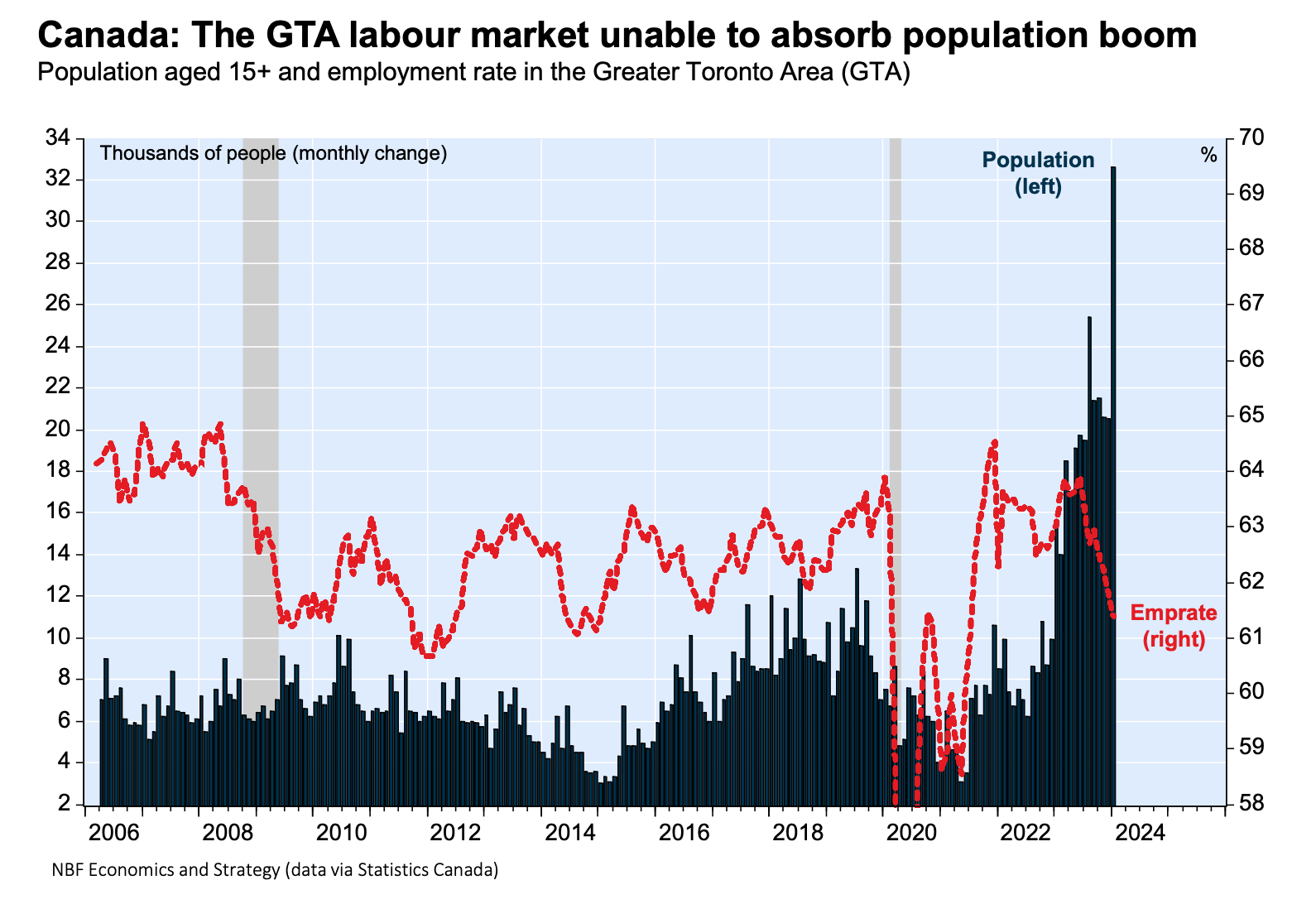In a recent assessment by the National Bank of Canada, a critical gaze is cast over the country’s approach to economic expansion through aggressive population increase. The report underscores a glaring oversight in the national strategy: the actual employment prospects for the burgeoning population. As Canada celebrates reaching unprecedented immigration milestones, the looming question of employment for these new entrants persists.
In January alone, the Canadian labor market welcomed an exceptional surge of 125,000 workers, marking a 4.7% growth rate on an annual basis. This development, captured in the latest Labor Force Survey, seemingly contradicts the drop in unemployment rates, a figure that the National Bank of Canada suggests is skewed by a rise in the classification of long-term unemployment among those who have ceased job hunting.
The analysis highlights the Greater Toronto Area (GTA) as a microcosm of the broader national challenge. The GTA, home to 18% of Canada’s populace, accounted for over a quarter of the entire country’s population growth last month, with 32.6k workers settling in the region. This area alone saw a 6.8% growth rate, significantly outpacing the national average and underscoring the acute pressure on local employment markets.
Stephane Marion, the Chief Economist at the National Bank of Canada, pointed out the unsustainable nature of this growth, particularly under the current economic conditions. “The labor market, especially in high-growth regions like the GTA, is stretched thin, struggling to accommodate the influx of new workers,” Marion explained. The employment-to-population ratio in the GTA dipped to 61.4% in January, the lowest since the pandemic restrictions of 2021, signaling a troubling trend.

Marion further cautioned that what was once an advantage for the GTA, being a high employment growth region, has now become a liability. The average employment rate in the GTA, typically higher than the national average, has fallen, indicating increased risks of unemployment for new arrivals.
In response to these findings, the National Bank of Canada advocates for a strategic reassessment of the country’s population growth policies. Marion suggests the establishment of a non-partisan expert council to guide policymakers with a realistic appraisal of how much population growth the economy can sustainably support. Such a move, according to Marion, is crucial for preserving Canada’s global standing as a destination for international talent and for ensuring the long-term health of its economy.
Warnings from the National Bank of Canada echo concerns raised by other financial institutions, highlighting a critical need for a coherent national strategy to navigate the complexities of population growth and labor market integration.





